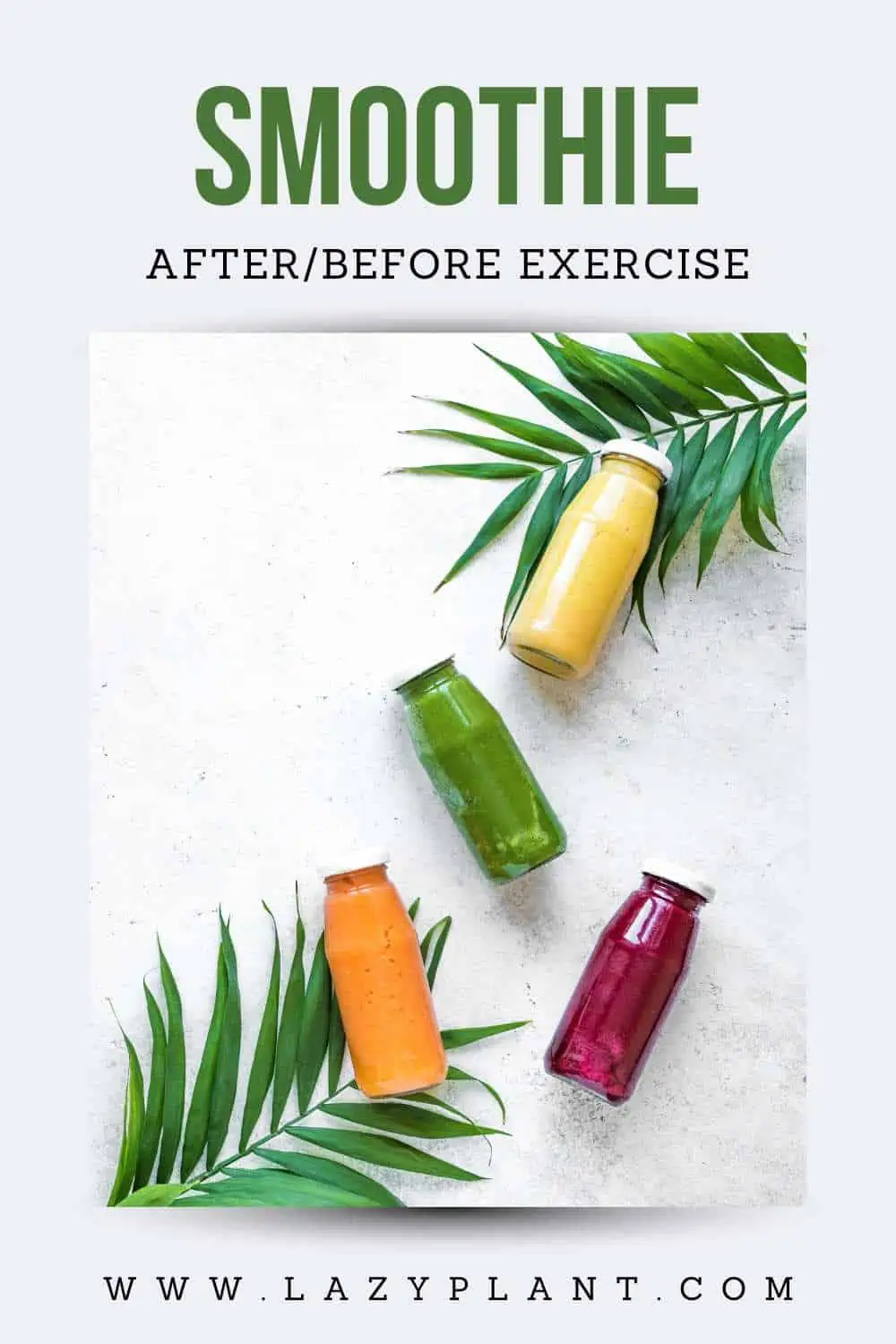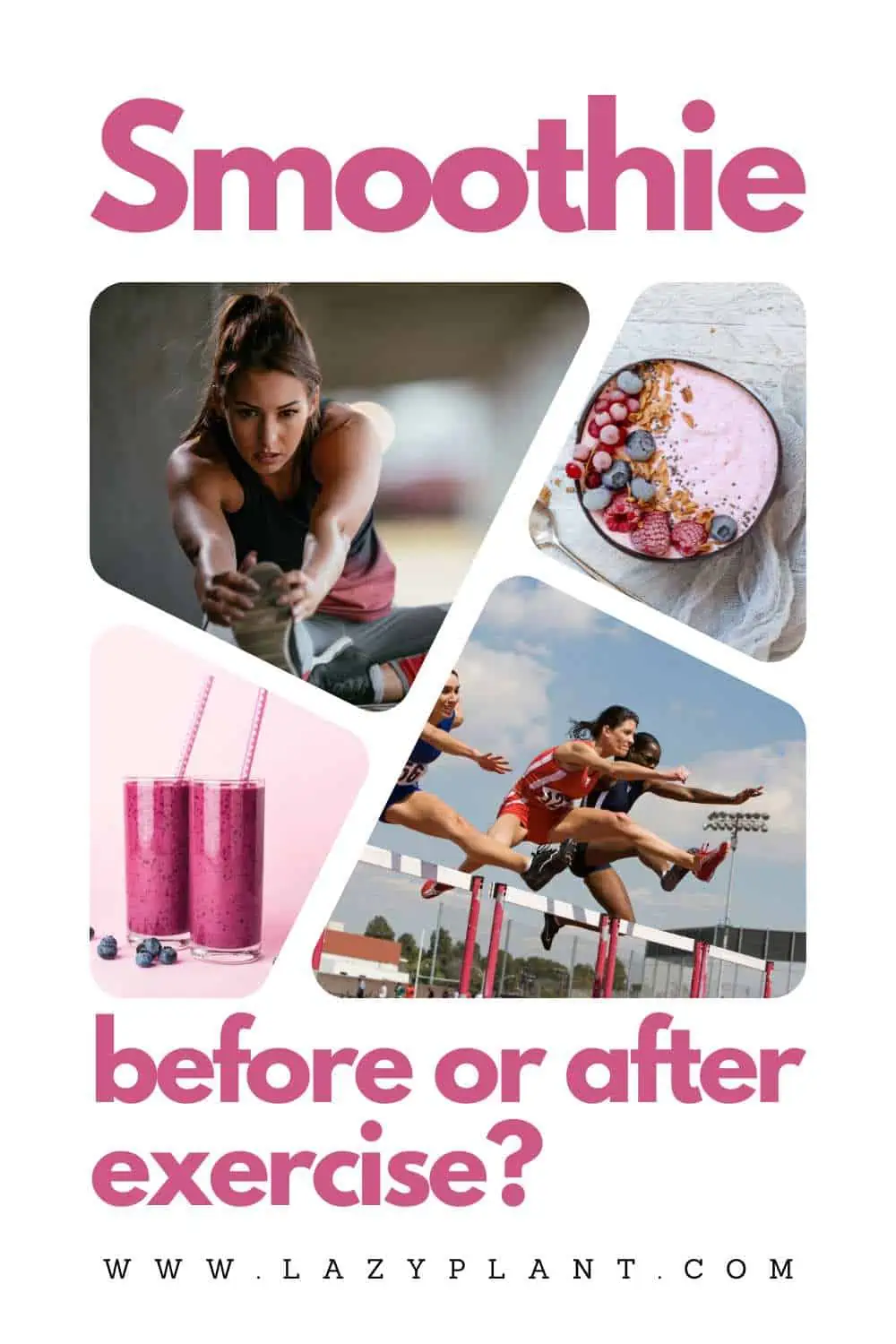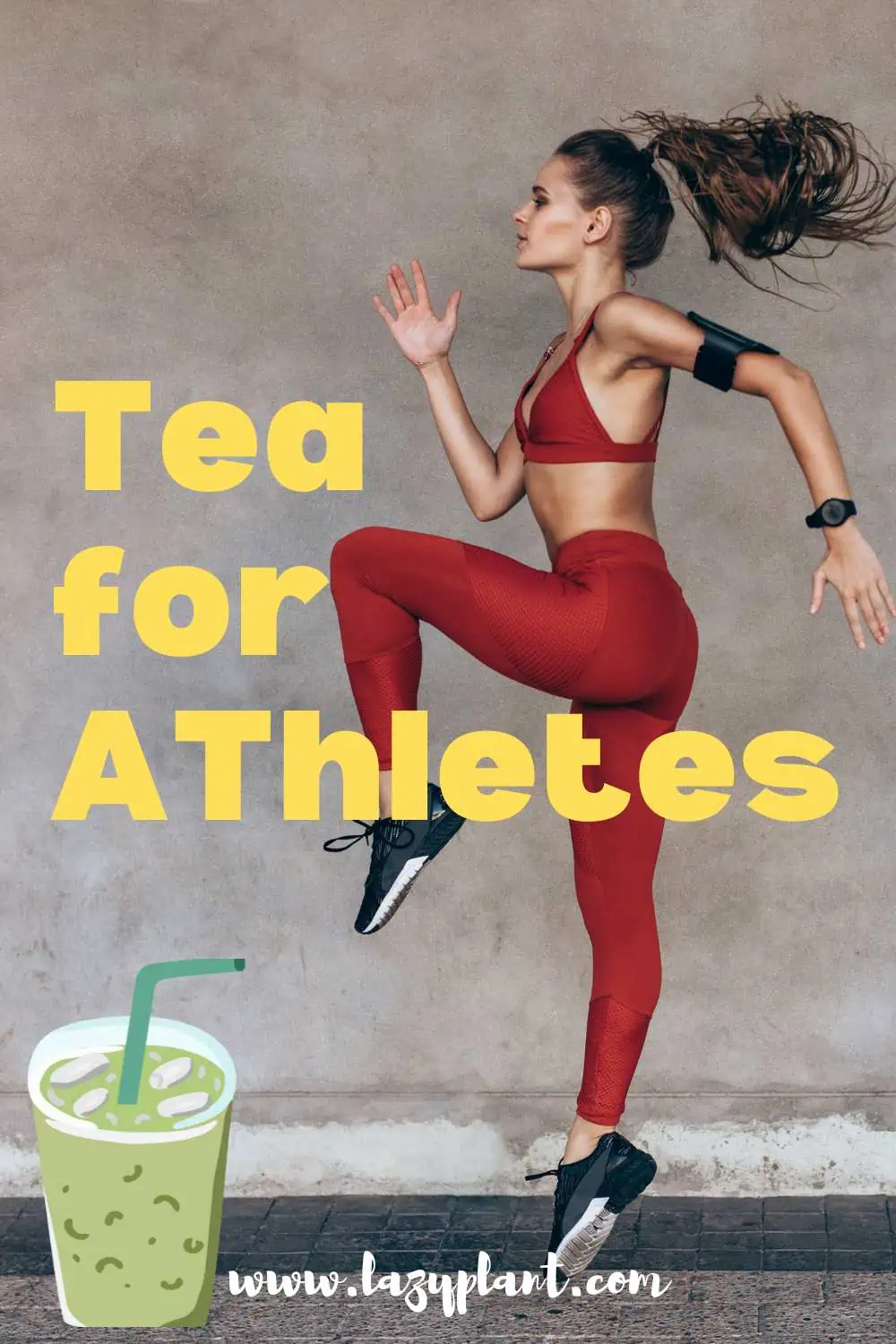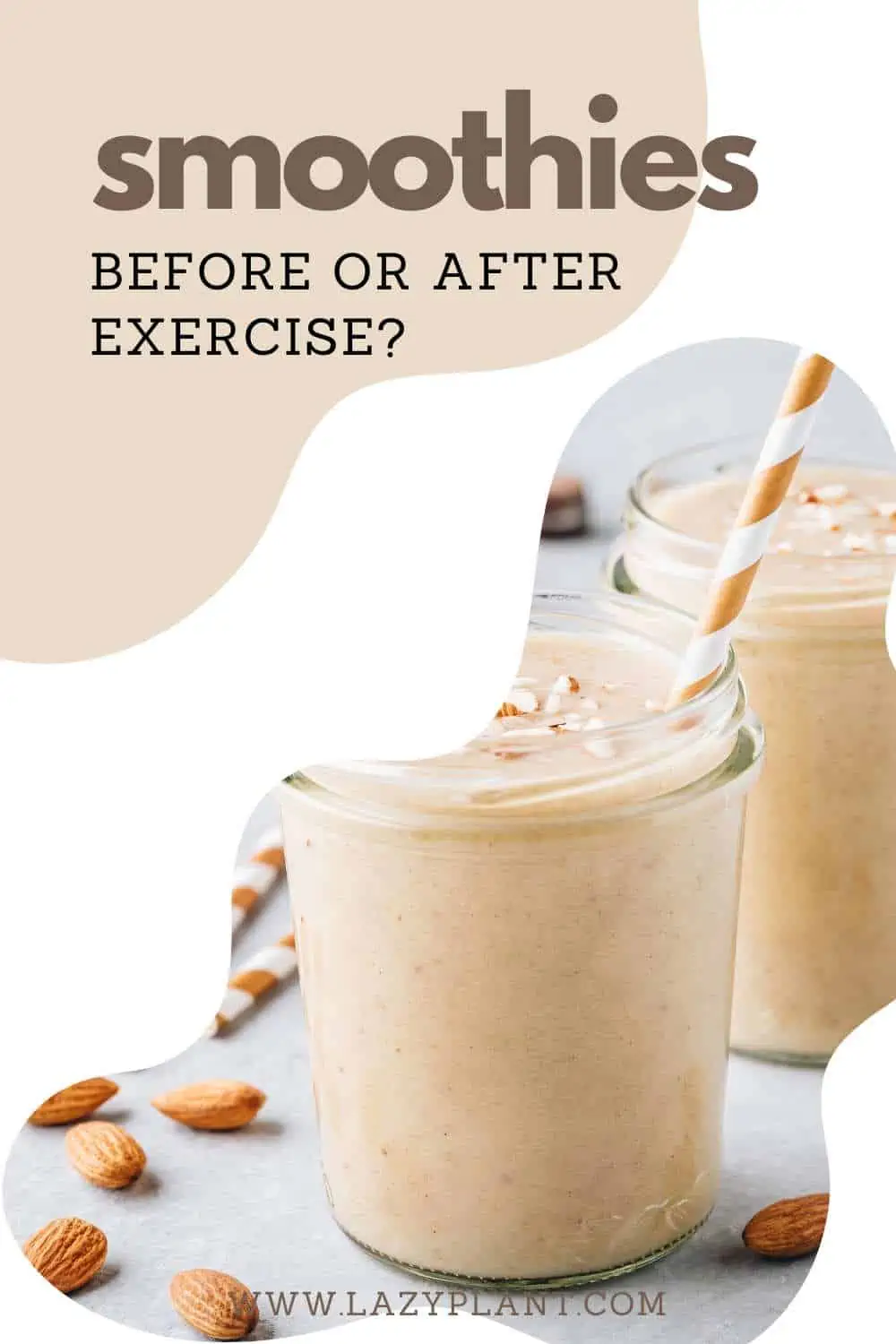Actually, the best time to drink a smoothie is after exercise. It promotes muscle growth and recovery, as it’s high in protein, vitamins, minerals, and antioxidants!
A protein smoothie before a workout can make you sleepy or cause discomfort, impairing sports performance!
Should I drink a smoothie before a workout?
Provides energy before the gym
Smoothies can be great pre-workout snacks. Especially, fruit smoothies, which are rich in sugar. Boosting sugar intake before strenuous exercise supports athletic performance.
The sugar of fruits is stored as glycogen in the muscles, which is an instant source of energy. In addition, fruits contain much more than sugar. They’re packed with antioxidants, vitamins, electrolytes, and other health-promoting phytochemicals that a hard-working body requires in high amounts.

If you want to lose weight, you could prepare a pre-workout smoothie with less sugar by using low-sugar fruits, like berries. For instance, strawberries and raspberries are pretty low in sugars and calories!
You could add fruit juice to your pre-workout smoothie in order to minimize fiber consumption before exercising. One of the most beneficial fruit juices for any athlete is pineapple juice, as it’s the only natural source of bromelain! This enzyme relieves joint pain and muscle soreness, as it has potent anti-inflammatory properties!
Also, you could add the juice of foods high in nitric oxide to your pre-workout smoothie. These compounds enhance endurance performance and muscle pump. They help the body supply oxygen to the working muscles.
Hydration
Moreover, drinking a smoothie before a workout can hydrate you. Proper hydration is vital for sports performance and muscle recovery.
Only a well-hydrated body can achieve optimum athletic performance.
Fruit juices hydrate the body better than tap water because they’re rich in electrolytes as well. We have to replenish lost electrolytes as well as fluids. These essential minerals (calcium, potassium, magnesium) are involved in nerve and muscle functions.
In addition, fruit juices contain high-quality, 100% purified water. Fruits are natural water filters!
How long before exercise can I drink a smoothie?
However, you shouldn’t drink a smoothie right before exercise. You should drink it at least 2 hours before working out.
Consuming fiber before a workout can have detrimental effects on sports performance. As it’s hard to digest, fiber can make you feel bloating or cause stomach discomfort. Especially, if you have a sensitive stomach.
Additionally, you shouldn’t add too many ingredients to your pre-workout smoothie. More than 2–3 ingredients can make the smoothie difficult to digest. Certainly, you should drink an easily digested smoothie or other snack before a workout.
The best time to drink a smoothie is after a workout
A post-workout meal has to be rich in carbs and protein. A green, protein-rich smoothie is an excellent post-workout snack.
Firstly, you can add a scoop of your favorite protein powder to your smoothie.
Furthermore, carbs, vitamins, electrolytes, and antioxidants in fruits and vegetables support recovery.
Athletes need carbs to quickly replenish muscle glycogen stores.
Lean body
Also, consuming a smoothie after exercise can help control post-workout appetite, preventing overeating or making unhealthy food choices. This super healthy food option can help athletes or fitness enthusiasts maintain a lean body year-round.
How to prepare the best post-workout smoothie?
One key ingredient for most post-workout smoothies is the banana. Not only it’s high in carbs and potassium, But also banana provides a creamy effect.[1]
Avocado is another key ingredient in smoothies. It’s also rich in potassium, omega-3s, and other healthy fats.
Drinking a smoothie with whole fruits, vegetables, and herbs after the gym can accelerate recovery.
Vitamins, electrolytes, and antioxidants in these foods are beneficial for muscle repair. Among other benefits, they fight exercise-induced oxidative stress. If untreated, it can lead to fatigue and poor physical performance.

Last, but not least, you could add green tea instead of water to your post-workout smoothie. Green tea promotes athletic performance, as it’s packed with polyphenols and caffeine. Also, it stimulates the synthesis of nitric oxide! You can add green tea ice tubes to your smoothie as well.
Also, the meal after the gym has to be rich in protein. If you want to drink a post-workout smoothie high in protein, you can add a scoop of a high-quality plant-based or whey protein powder.
Herbs
Herbs and spices are the most nutrient-dense foods. An athlete should consume them daily to substantially improve muscle recovery and sports performance! Here are 9 examples of herbs and spices that can provide additional flavor and boost the antioxidant content of your post-wotkout smoothie:
- Mint: Adding fresh mint leaves or a dash of mint extract can give a refreshing and cooling twist to the tea.
- Ginger: Fresh ginger slices or grated ginger can add spice to the tea.
- Lemongrass: Lemongrass enhances the overall aroma of the tea.
- Cinnamon: A small cinnamon stick or a pinch of cinnamon powder can infuse a warm and comforting flavor.
- Cardamom: Adding a few crushed cardamom pods or a sprinkle of ground cardamom can lend a delightful, aromatic note.
- Basil: Fresh basil leaves can provide a hint of herbal sweetness and a slightly savory undertone.
- Thyme: A small sprig of fresh thyme can contribute a subtle earthy flavor to the tea.
- Lavender: Dried lavender flowers can add a floral and soothing touch.
- Cloves: Adding a couple of whole cloves or a pinch of ground cloves can introduce a warm and spicy taste. Cloves are the richest food in polyphenols! By far.
You can experiment with different combinations and adjust the quantities based on your personal preferences.
Tea
Green and black tea fight exercise-induced oxidative stress because they’re packed with catechins and polyphenols. Especially, green tea has up to 600 mg of polyphenols per cup! These compounds have potent anti-inflammatory properties. Oxidative stress induced by physical activity can substantially lower athletic performance!
In addition, although drinking green tea after the gym doesn’t seem to reduce muscle soreness, it promotes muscle recovery. It reduces muscle pain caused by improper exercise, bruising, and subsequent injuries.[2]
Also, green tea supports weight loss during moderate-intensity exercise because it can improve insulin sensitivity and glucose tolerance. Green tea catechins, called EGCG, play a major role in stimulating fat metabolism.[3]

Catechins increase the amount of available energy during a workout. According to a study, short-term consumption of green tea extract in healthy untrained men increased the amount of energy available during 30 min of cycling at 60% of the maximum oxygen consumption![4]
Moreover, green tea improves sports performance because green tea polyphenols and catechins increase endothelial nitric oxide synthesis and vasodilation. The production of nitric oxide helps transfer more oxygen to the muscles. Endurance athletes can run faster and for longer, as nitric oxide improves maximum oxygen uptake, delaying fatigue! Athletes should consume a wide variety of foods naturally high in nitric oxide.
Also, green tea may improve energy levels during exercise because it affects mitochondrial functions! Mitochondria are the power plants of cells.
L-theanine in tea can improve executive functions. This amino acid may reduce stress. Especially in people exposed to stressful conditions. Therefore, the daily tea consumption a couple of days before a major athletic event or a big race could relax athletes![5,6]
How much green tea should athletes drink a day?
As a rule of thumb, athletes should drink 2 cups of green tea a day in order to take advantage of its health benefits. Higher dosages may be beneficial as well.
A cup of tea has about 30-40 mg of caffeine per cup. Two cups of tea are equivalent to a cup of coffee.
In general, black tea has about 50% more caffeine than green tea. Green tea has about 30 mg, while black tea can have up to 47 mg of caffeine per cup. Decaffeinated tea has negligible amounts of caffeine. Typically, it has between 2 and 15 mg of caffeine per 8 oz cup.[7]
Caffeine may improve aerobic and anaerobic performance and delay fatigue. Also, it may help athletes lift more pounds, stay focused during demanding exercise, and improve mood.[8,9]
In addition, caffeine can help athletes maintain a lean body year-round. High caffeine intake appears to promote weight loss. It helps burn belly fat and improve body composition, especially when combined with submaximal aerobic exercise performed after a fasting period.[10,11]
It seems that the best time to increase caffeine intake is 60 minutes before exercise though.
An energy drink can have more caffeine than 8 cups of green tea!
What’s the best tea for muscle recovery?
There are three types of tea: green tea, oolong tea, and black tea. All have a similar nutritional value. You should consume the tea that you enjoy the most.
As a rule of thumb, black tea has more caffeine, while green tea has a higher polyphenol concentration. The major polyphenol in green tea is catechin, while the major polyphenol in black tea is tannin. All teas have small amounts of vitamins, amino acids, and carbohydrates.
Also, you could add matcha tea powder to your post-workout smoothies. Matcha tea has a superior nutritional value as well. For instance, it’s one of the richest foods in chlorophyll.
High chlorophyll intake is particularly beneficial for athletes. It helps supply oxygen to the tissues, detoxes the body, and increases energy levels.
Peppermint
Peppermint essential oil is rich in menthol (~30%) and menthone (20-30%). According to studies, peppermint essential oil can help athletes improve their sports performance.[12]
It has painkilling, analgesic, anti-inflammatory, antispasmodic, antioxidant, and vasoconstrictor effects. Peppermint oil could relax bronchial muscles, increase the oxygen concentration in the brain, and decrease the blood lactate level.
Peppermint improves muscular energy metabolism. Scientists observed great results, just after 10 days of peppermint supplementation.
In a study, athletes ran for 15 minutes. Runners who inhaled peppermint aroma, before exercise, performed better. It seems that the inhalation of peppermint aroma improves lung capacity and inhalation ability.
Peppermint is a great natural pre-workout supplement for cardio, as it increases nasal airflow, supplying more oxygen to the brain. That’s beneficial for cardio exercises, such as running.
Furthermore, peppermint essential oil is good for athletes, as it helps people tolerate pain. Maybe it’s a good idea to have a massage with peppermint essential oil before a long run. Peppermint oil may delay the feeling of pain and fatigue, due to decreased blood lactate levels.
Moreover, you could massage your muscles with peppermint essential oil after a long run, or a strenuous workout. Peppermint extract has a powerful analgesic effect.
How can Peppermint used as a pre-workout supplement?
There are many ways to use peppermint. You could:
- eat peppermint. It provides a unique flavor to recipes and boosts the antioxidant status of the body. You can add it to your post-workout smoothies.
- inhale peppermint essential oil before running or exercising. The easiest way is to inhale it directly out of the bottle. You can also use a diffuser.
- massage the skin with a diluted oil. Peppermint essential oil can relieve muscle pain. Add some drops of peppermint essential oil to a carrier oil before use.
Maca Powder
Maca is the root of the maca plant. It is grown in the mountains of Peru. It is grown at an altitude above 13,000 feet (4,000 m) from the sea level. It may be the highest-altitude crop in the world. The maca plant is used in the region, for medical purposes for thousands of years. It is believed that maca has helped the locals to withstand the harsh conditions.
Research has shown that maca may affect sexual behavior, fertility, mood, high blood pressure, memory, osteoporosis, and metabolism. Maybe some health benefits are due to maca unique compounds, called macamides. No other plant contains them. Further research is needed, though.[13]
Most noteworthy, maca is known for its ability to correct hormonal imbalances in men and women. Maca root powder may help women entering perimenopausal.[14]
It’s considered a non-hormonal energizing supplement. It can assist physically active people and athletes who follow strenuous workouts. It may help athletes work out harder more often. It acts as an energy stimulus. Maca root powder increases both endurance and muscular stamina.
Maca root doesn’t contain plant estrogens. It’s only rich in phytosterols. These beneficial phytonutrients have been linked to decreased LDL cholesterol, cancer risk, and weight loss.
Maca root powder is beneficial for athletes who want increased muscle growth because it’s 20% protein. A tablespoon of maca contains approximately 3.5 grams of protein.
It contains 19 amino acids. It’s a complete plant-based protein, as it contains all 9 essential amino acids. The most abundant amino acids of maca powder are arginine, serine, histidine, aspartic acid, glutamic acid, glycine, valine, phenylalanine, tyrosine, and threonine.[15]
Some maca manufacturers claim that maca root powder reduces muscle recovery time. In a study, researchers gave bike athletes maca powder, significantly improving their performance.[16]
How to consume maca for muscle growth?
You can add a teaspoon of maca powder to your favorite post-workout smoothie.
As a rule of thumb, athletes could benefit from taking 1-2 teaspoons of maca root powder a day.
You can find a wide variety of maca root supplements on iHerb. The recommended intake for athletes is a capsule a day. Most dietary supplements contain 500 mg of maca root powder per capsule.
Amla Powder
Amla powder has the highest antioxidant content per 100g! It’s 261.5 mmol per 100g. Just for comparison, typical plant-based foods high in antioxidants have an antioxidant value of less than 1 mmol per 100g.[17]
Just a tsp of amla powder or a tablet a day is enough for most healthy people who follow a well-balanced diet. It can skyrocket the antioxidant capacity of the body. You can find a wide variety of amla supplements and powders on iHerb. Athletes can take 1-2 capsules of amla supplements.
How much smoothie can an athlete drink?
As a rule of thumb, most athletes could drink 1–2 cups of their favorite smoothies after the gym.
On the contrary, it’s preferred to drink only 1/2-1 cup of a low-calorie, sugar-rich smoothie before a workout.
How many calories in a cup of smoothie?
The number of calories in a cup of smoothie can vary widely depending on the ingredients used and the portion size.
On average, a typical homemade smoothie contains anywhere from 100 to 300 calories or more per cup.
If you want to drink a nutrient-dense smoothie, you should add low-calorie fruits, like berries or citrus fruits. Other favorite fruits (e.g. banana, avocado) have significantly more calories.

Most vegetables (e.g. spinach, kale) are also super nutrient-dense foods. You can consume high quantities without gaining weight. They’re the ideal ingredient to your smoothie if you’re mindful of total energy intake. They add too much volume and manage appetite.
The inclusion of protein sources like Greek yogurt, milk, kefir, or protein powder contributes to the calorie count as well.
Kefir is a great post-workout beverage. It’s the richest common food in probiotics, and it’s packed with vitamins.
Adding sugar, honey, or syrups will also increase the calorie content of the smoothie. You can use low-calorie sweeteners, like stevia, instead.
Adding peanut butter or any other nut butter significantly adds to the calorie count. In this case, a cup may have more than 300 calories.
Long-distance endurance athletes or bodybuilders in the bulking phase could add nut spreads to post-workout smoothies. Avoid adding these fatty foods to your smoothie if you prefer drinking it before exercising.
What food should you avoid after a workout?
After exercise, you should avoid eating foods high in salt, refined sugar, or fat. Sports drinks, soft drinks, sweets, and processed foods are packed with refined sugar.
Furthermore, you should avoid foods high in fat. Although we need fat, too much fat isn’t good for maintaining a lean body. Prefer to consume fat from seeds or nuts. You can add ground seeds or nuts to your post-workout smoothie as well. For instance, a tsp of flaxseed can skyrocket your omega-3 intake!
Omega-3s play a beneficial role in muscle gain.
Certainly, eating nothing after exercise is the worst thing you can do!
Always Add Protein
Adding protein to the carbohydrate-rich meal can increase the rate of glycogen replenishment by approximately 38%. This is vital for athletes of basketball, soccer or every other sport which has very short recovery periods.[18]
Researchers compared the effectiveness of a meal containing only carbs (152 grams of carbs) with a meal with carbs and protein (112 grams of carbs and 40 grams of protein). The meal containing protein helped athletes recover faster from strenuous aerobic exercise.
Also, protein in the post-workout meal improved sport performance. The run time to exhaustion was 21% longer! According to another study, adding protein to the post workout meal helped cyclists ride 40% longer!
For fast glycogen replenishment, and the fastest recovery, athletes should have about 4 to 1 carbohydrate to protein ratio. 1 gram of protein per 4 grams of carbs!
It’s vital for faster muscle recovery and glycogen synthesis to have a meal with protein and carbs immediately after exercise. Right after exercise, the rate of glycogen synthesis is 50% higher compared to several hours after a workout. Moreover, protein synthesis can be increased 3-fold, compared to protein synthesis 3 hours after exercise.

A green, protein-rich smoothie is preferred to be consumed after strenuous exercise. Especially if it has too many ingredients. Adding spinach or kale, a spoon of chia or hemp seeds, and a scoop of protein powder makes the smoothie a complete meal. But, it takes a lot of time to digest.
If you prefer drinking a light smoothie before exercise, at least avoid fiber-rich vegetables and fruits. Also, avoid adding too many ingredients.
Keto post-workout Smoothies
People on keto should limit their daily carbohydrate intake to a minimum. The total carbohydrate intake of a ketogenic diet should be no more than 50 g a day. Certain ketogenic diets further limit the daily consumed carbs to 20 g.[13]
Hence, most popular smoothies, such as banana smoothies, aren’t suitable for a ketogenic diet. They contain too many net carbs.
Milk & yogurt are key ingredients for any smoothie recipe
First, any keto smoothie could contain Greek yogurt or whey protein. They’re great keto-friendly foods.
Whole milk Greek yogurt contains 3.25 grams of sugar per 100g. A tbsp of Green yogurt contains only 0.5 grams of sugar.
Moreover, whey protein powder contains only 1 gram of sugar per 100g! A scoop of whey protein contains negligible amounts of net carbs! Whey protein powder is among the best foods for weight loss.
Hence, both Greek yogurt and whey protein are ideal ingredients for keto smoothies.
In contrast, cow’s milk isn’t keto-friendly. Whole-fat cow’s milk contains 4.8 grams of sugar per 100g. A glass contains 12 grams of sugar. 2% fat milk contains slightly more sugar.[14]
People on keto can drink cow’s milk only in moderation.
Furthermore, only unsweetened milk or yogurt are keto-friendly. Most sweetened foods are packed with sugar.
Plant-based Milks are great ingredients for Keto Smoothies
Many plant-based milks can be great alternatives to cow’s milk. For instance, unsweetened almond and soy milk are great ingredients to a keto smoothie, as they contain less than 0.5 grams of sugar per cup!
In particular, soy milk is great for weight loss. First, it has fewer calories than cow’s milk. It has a great nutritional value as well. Soy milk is particularly rich in protein, calcium, and iron.
Actually, soy milk as well as most common soy products is ideal for a ketogenic diet. Soybeans have the lowest carbohydrate content among common beans, while they have the highest fat content.
Keto-friendly fruits for smoothie
Certainly, most fruits aren’t keto-friendly. They’re too high in sugar. However, there are certain fruits low in carbs that are ideal for keto smoothies.
Avocado is the king of any ketogenic diet. Both California and Florida avocados are pretty low in sugar. They contain only 0.3 and 2.4 grams of sugar per 100g, respectively. Fiber is the main carbohydrate in avocado.[3]
Actually, avocado supports weight loss. Due to its high fiber and protein content, avocado keeps us full and prevents cravings for fattening foods. Moreover, avocado has a superior nutritional value. For instance, it’s particularly rich in omega-3 fatty acids, which are essential for good health.
Berries are also great ingredients for any keto smoothie. They’re particularly low in sugars.
You could add a handful of whole berries to your keto smoothie. 1 oz of cranberry, raspberry, blackberry, strawberry, or blueberry contains less than 3 grams of sugar. All raw berries are keto-friendly!
Also, all berries, and especially, raspberries are good for weight loss. Not only, do they have only a few calories, but also, they’re high in fat-burning phytochemicals.
| sugars (grams per 100g) | sugars (grams per 1 oz) | Juice – sugars (grams per 100 mL) | |
| cranberry | 4.3 | 1.1 | 12.1 |
| raspberry | 4.4 | 1.1 | 11.4 |
| blackberry | 4.9 | 1.2 | 7.7 |
| strawberry | 4.9 | 1.2 | 7.7 |
| blueberry | 10 | 2.5 | 6.5 |
Furthermore, berries are packed with antioxidant compounds, such as flavonoids, stilbenes, tannins, anthocyanins, and phenolic acids.[15]
Other common fruits relatively low in sugars are cantaloupe and grapefruit. You could add small portions of these to your favorite keto smoothie. Especially, if you follow a ketogenic diet that allows you to eat up to 50 grams of net carbs.
Dark leafy greens for keto smoothies
Other great ingredients for your keto smoothie are all green leafy greens, like turnip greens, kale, and spinach.
Dark leafy greens support weight loss and good health, as they’re packed with antioxidants, protein, fiber, vitamins, and minerals. On the other hand, they’re pretty low in calories and sugars.
Kale is among the healthiest foods you can eat. It’s particularly rich in protein, calcium, iron, fiber, chlorophyll, vitamin C, and vitamin K. It’s ideal for any keto diet for weight loss. It has only 0.8 grams of sugar per 100g.
Spinach is another great ingredient for a healthy keto smoothie. It has only 0.4 grams of sugar per 100g while it’s packed with protein, fiber, calcium, iron, and carotenoids!
Other common keto greens are broccoli, cauliflower, arugula, celery, and cucumber. Actually, most non-starchy vegetables are low in net carbs. They’re suitable for keto diets.
Furthermore, you could add herbs and spices to your keto smoothie. Not only herbs and spices are keto-friendly, but they’re also among the richest foods in antioxidant compounds!